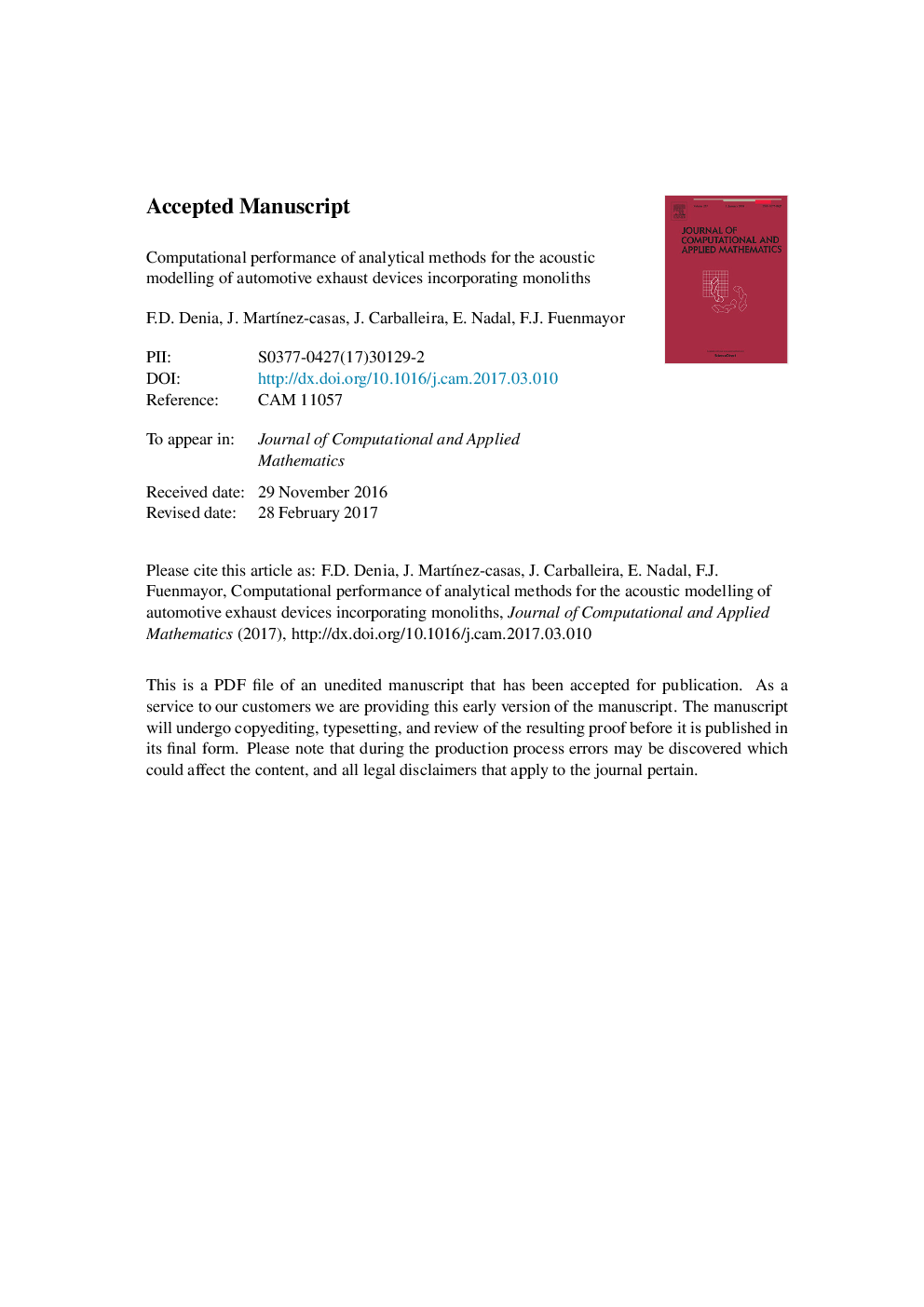| کد مقاله | کد نشریه | سال انتشار | مقاله انگلیسی | نسخه تمام متن |
|---|---|---|---|---|
| 8902274 | 1631961 | 2018 | 26 صفحه PDF | دانلود رایگان |
عنوان انگلیسی مقاله ISI
Computational performance of analytical methods for the acoustic modelling of automotive exhaust devices incorporating monoliths
ترجمه فارسی عنوان
عملکرد محاسباتی روش های تحلیلی برای مدل سازی صوتی دستگاه های اگزوز خودرو با استفاده از مونولیت
دانلود مقاله + سفارش ترجمه
دانلود مقاله ISI انگلیسی
رایگان برای ایرانیان
کلمات کلیدی
مدل سازی آکوستیک، از دست دادن انتقال، دستگاه اگزوز خودرو، مونولیت، روش تطبیق حالت، تکنیک نقطه جابجایی،
موضوعات مرتبط
مهندسی و علوم پایه
ریاضیات
ریاضیات کاربردی
چکیده انگلیسی
The acoustic modelling of automotive exhaust devices, such as catalytic converters (CC) and diesel particulate filters (DPF), usually requires the use of multidimensional analytical and numerical techniques. The presence of higher order modes and three-dimensional waves in the expansion and contraction subdomains, as well as sound propagation within the monolith capillary ducts, can be considered through the finite element method (FEM), although this approach is traditionally thought to be very time consuming. With a view to overcome this limitation and to reduce the computational effort of the FEM, alternative modelling techniques are presented in the current work to speed up transmission loss calculations in exhaust devices incorporating monoliths. These approaches are based on the point collocation technique and the mode matching method. As shown in earlier studies, the sound attenuation of an exhaust device incorporating a monolith can be properly predicted if the latter is replaced by a plane wave four-pole transfer matrix providing a relationship between the acoustic fields at both sides of the monolithic region. Therefore, this work combines the presence of multidimensional higher order modes in the expansion and contraction regions with one-dimensional wave propagation within the capillary ducts of the central monolith. The point collocation technique and the mode matching method are applied to the compatibility conditions of the acoustic fields at all the subdomain interfaces to couple the solutions of the wave equation in the corresponding exhaust device subcomponents. For the particular case of rigid circular ducts, Bessel functions are considered as transversal pressure modes. The computational efficiency and accuracy of the results associated with the two analytical modelling techniques presented here are assessed, including the effect of the number of modes and collocation points, as well as their location. All the analytical approaches proposed in this work provide accurate predictions of the device attenuation performance and outperform the computational expenditure of a FE computation. Some differences are found, however, among the various analytical schemes in terms of computational speed and solution accuracy. From the results presented here, the mode matching method is the most efficient technique for the particular configurations under study, mainly due to the possibility of exploiting the orthogonality properties of the transverse pressure modes.
ناشر
Database: Elsevier - ScienceDirect (ساینس دایرکت)
Journal: Journal of Computational and Applied Mathematics - Volume 330, 1 March 2018, Pages 995-1006
Journal: Journal of Computational and Applied Mathematics - Volume 330, 1 March 2018, Pages 995-1006
نویسندگان
F.D. Denia, J. MartÃnez-Casas, J. Carballeira, E. Nadal, F.J. Fuenmayor,
